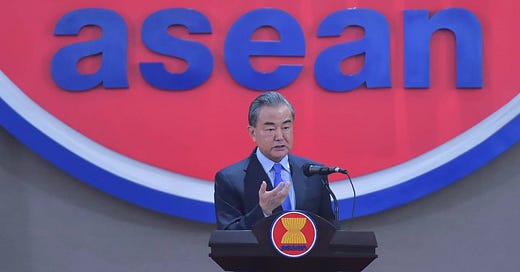Close Encounters
AUKUS debate for ruling Labor, Biden no-show at Jakarta ASEAN summit, Biden rejects open markets, China’s Wang Yi tours ASEAN, Fortress Guam is world's most densely militarised locality.
UPDATE: At this week’s ALP national conference, delegates will vote to delete the words “including AUKUS” from party documents.
Diplomatically Biden’s absence will constitute a humiliation for President Jokowi as the host.
Biden launched another technology battle front with China by signing an executive order to block and regulate US outbound investments…




